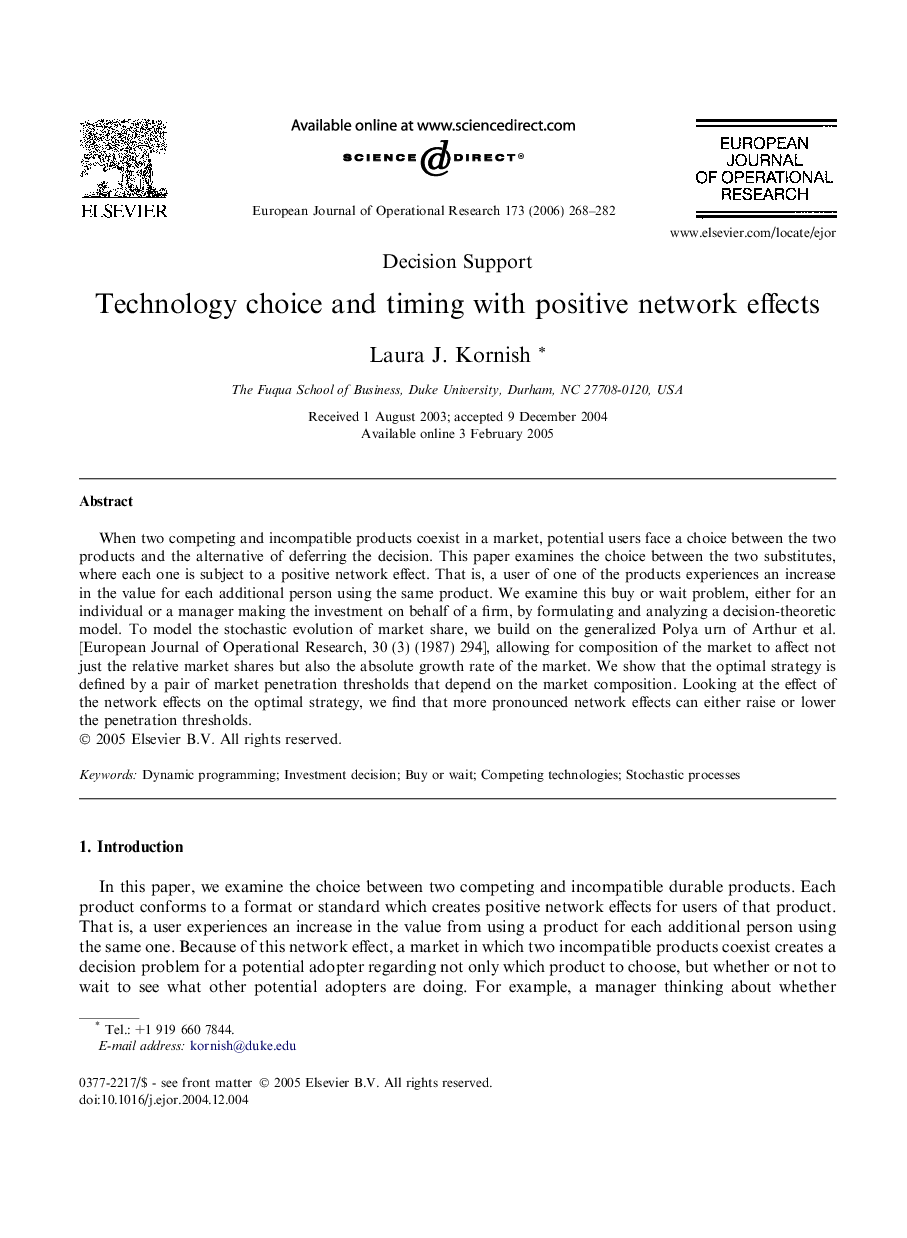| Article ID | Journal | Published Year | Pages | File Type |
|---|---|---|---|---|
| 482606 | European Journal of Operational Research | 2006 | 15 Pages |
When two competing and incompatible products coexist in a market, potential users face a choice between the two products and the alternative of deferring the decision. This paper examines the choice between the two substitutes, where each one is subject to a positive network effect. That is, a user of one of the products experiences an increase in the value for each additional person using the same product. We examine this buy or wait problem, either for an individual or a manager making the investment on behalf of a firm, by formulating and analyzing a decision-theoretic model. To model the stochastic evolution of market share, we build on the generalized Polya urn of Arthur et al. [Arthur, W.B., Ermoliev, Y.M., Kaniovski, Y.M., 1987. Path-dependent processes and the emergence of macro-structure. European Journal Of Operational Research 30 (3), 294–303], allowing for composition of the market to affect not just the relative market shares but also the absolute growth rate of the market. We show that the optimal strategy is defined by a pair of market penetration thresholds that depend on the market composition. Looking at the effect of the network effects on the optimal strategy, we find that more pronounced network effects can either raise or lower the penetration thresholds.
